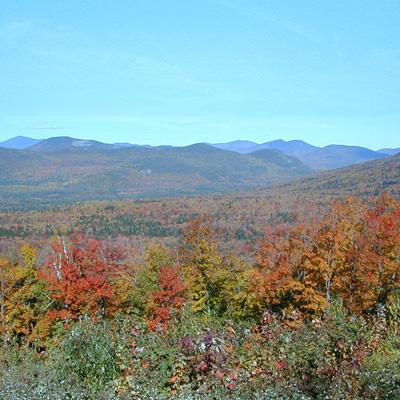Effects of Future Changes in Climate and Atmospheric Composition on Forest Ecosystems across the Northeastern U.S.: Model Development, Testing, and Projections

The consequences of climate change on the health and productivity of forests of the northeastern United States—especially over the long-term—is still not well understood. To improve our understanding, NSRC researchers turned to mathematical models that assess carbon, nitrogen, and water cycling under a range of environmental and climate change conditions.
Researchers used an ecosystem model called PnET (http://www.pnet.sr.unh.edu) with climate predictions for the northeastern U.S. that included four climate scenarios and two carbon dioxide (CO2) response scenarios. They looked at the projected effects of these scenarios on forest growth, carbon exchange, water runoff, and nitrate (form of nitrogen) leaching from soil at five research sites: Huntington Forest, Adirondacks, NY; Biscuit Brook, Catskills, NY; Hubbard Brook, White Mountains, NH; Harvard Forest, Petersham, MA; and Howland Forest, ME.
Models that included moderate climate warming scenarios all predicted increased forest growth rates in the northeastern United States through the 21st century. In all climate scenarios, the predicted effects of CO2 were as great or greater than the predicted effects of changes in climate. Large carbon increases in northeastern forests occurred in scenarios that included CO2 enhancement, and small increases or declines in carbon occurred where CO2 enhancement was absent. These findings provide a range of possible outcomes and highlight interactions among ecological processes that are likely to be important in the response of forests to changes in climate and CO2. They also emphasize the need to improve our understanding of long-term forest ecosystem response to CO2.
